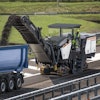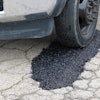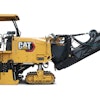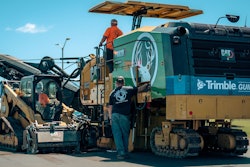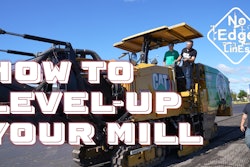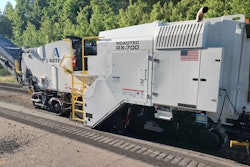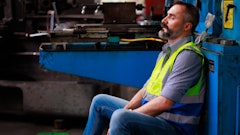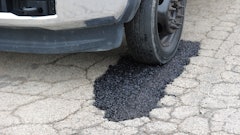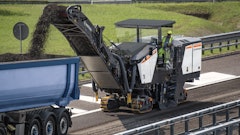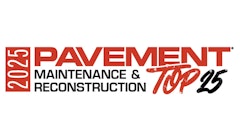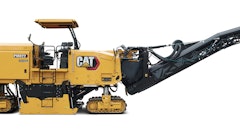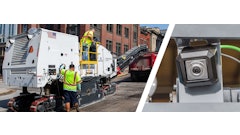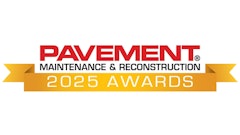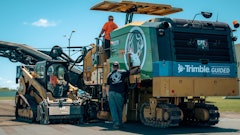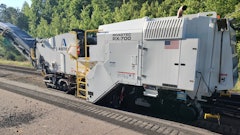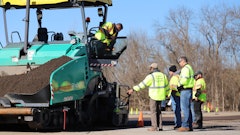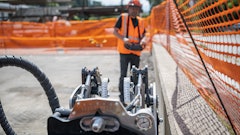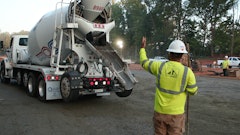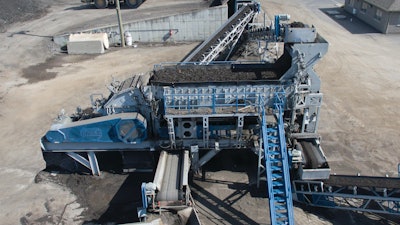
Meet Susanne Cobey, Eagle Crusher Company CEO, third-generation entrepreneur, and 2024 Association Equipment Manufacturers (AEM) Hall of Fame Award Winner. Susanne has been the driving force behind the paradigm shift that turned Eagle Crusher Company from its humble beginnings in 1915, into the large-scale manufacturing company it is today. Along the way, Susanne created a whole new industry in North America, and it wasn’t just happenstance that helped her to accomplish that feat.
From a child whose ambition was to be the president of GM because it was the biggest company she knew, Susanne was bound to do great things. From spearheading the drive for Eagle Crusher Company to start the commercial recycling industry in the field of crushing and screening in North America, to introducing the company’s own unparalleled line of UltraMax horizontal shaft impactors, to offering the first lifetime rotor warranty for North America in 2014, Susanne Cobey is an innovator and a pioneer.
How Susanne Cobey Started an Industry
In 1984, Eagle Crusher Company found itself in a quandary. Severe deterioration of company sales caused by the demise of its portable coal-crusher line forced the company to find a new direction. Susanne, then-VP of Sales and Finance, knew of customers’ failures processing asphalt and concrete with rebar with the traditional aggregate jaw and cone, and she set out to find a viable solution as there was not an established recycling industry at the time.
Susanne’s research worldwide led her to a unique Andreas style impactor in Germany that she knew was the answer, as the Andreas impactor had been successfully used for processing debris in war-torn Europe following WWII, but had been forgotten by the time producers here had set out to process asphalt and concrete with rebar using jaw crushers. She then had an Eagle Crusher plant, the Jumbo 1400, designed around the Andreas impactor that had been so successful after the war.
The first Jumbo 1400 customer was awarded a contract rebuilding the runways at Wright Patterson Airforce Base, near Dayton, Ohio. By recycling the concrete and using it as base material when all the other contractors had quoted only virgin material, the contractor made nearly $1 million on the job. The North American commercial industry for recycled concrete with rebar and reclaimed asphalt pavement (RAP) was born, and the idea of using impactors, again, for recycling resonated around the world.
Despite her father’s insistence that recycled concrete and asphalt was just a fad like the portable coal crushers had been, Susanne persisted in her vision to build Eagle Crusher’s commercial recycling equipment line into the market’s leading portable recycling equipment that it is today.
More Industry-Leading Accomplishments
Also in 1984, Susanne established a new marketing approach that led to producers getting their equipment, faster. Up to that time, crushing-and-screening-equipment manufacturers generally built equipment to customers’ specifications. Instead, Susanne decided to create a line of recycling equipment that she marketed as “Off the Shelf,” readily available for quick delivery. Today, that approach to crushing-and-screening-equipment manufacturing is the norm.
By 1994, Susanne desired to develop an even more innovative and robust impactor. She set her engineers to task to design a new impactor, using three rotor bars instead of four, by combining the solid rotor of a New Holland primary impactor with the three-bar rotor Stedman had perfected for use in its Grand Slam secondary impactor and the basic design of the Andreas impactor. Under Susanne’s leadership, Eagle Crusher introduced its own UltraMax® line of an unequaled, horizontal shaft impactor, featuring a unique, sculpted, solid steel, three-bar rotor, the industry’s heaviest, for the recycling and aggregate markets.
Philosophies for Innovation, Company Longevity, and Success
Understanding early on that a company is only as strong as its people, Susanne uses two business philosophies. One is to believe in yourself, in others, and God, and everything is possible. With this philosophy, Susanne inspires her team by bringing them with her to the table—a table where everyone has a voice, with no one voice stronger than another. Out of this collaboration of equals, great ideas are born, and the solutions to effective implementation, realized.
A second philosophy Susanne practices to achieve great things is what she calls, “Being stupid, crazy, stubborn, and lazy. Stupid enough to think that something can be done, crazy enough to actually do it, stubborn enough to stick with it, and lazy, because no one can accomplish something by oneself.” No matter how good one’s ideas are, it takes teamwork to make those ideas reality.
Company History/Susanne’s Career Path
The idea for Eagle Crusher began in the early 1900s when C.L. Woods, an Ohio distributor of Eagle Tractors, had a vision. Woods observed that farmers were taking the rocks from their fields and placing them along the dirt roadsides. He imagined, “What if someone created a small jaw crusher that could mount to the front of a tractor to crush the stone and use it to improve the roads?”
Woods approached Eagle Tractors with the idea, but when the company didn’t share his vision, he founded his own company to manufacture the jaw crusher he had imagined. Thus, in 1915, in Kenton, Ohio, Eagle Crusher Company was born. While Eagle Tractors eventually ceased production, Eagle Crusher Company continued to innovate and expand. To help with expansion, Woods sold Ralph Cobey, Susanne’s father, a share of the business.
In 1952 after Woods retired, Ralph bought Eagle Crusher Company outright and brought it to Galion, Ohio where his other businesses were located. Ralph sold Eagle Crusher company in 1964; then, bought it back in 1970 after it had been dismantled.
In 1974, Susanne became only the tenth employee when she was hired as Parts Manager. She advanced to Sales Manager, VP of Sales and Finance, and ultimately, President/CEO in 1990 when she was the only female running a company in her industry. In that same year, Susanne purchased the Stedman Machine Company in Aurora, IN.
After graduating from the University of Denver with a BS/BA in Finance and two minors, one in Accounting and one in Economics, Susanne started her career as a financial analyst for the Ford Motor Company. She was the first female ever hired for something other than an administrative support position.
Helping to Keep the Industry Strong
In the 1980s, Susanne’s recycling insights allowed her to see the need for a recycling organization focusing on a wider range of recycling businesses than were currently being served. Collaborating with Bill Turley of C&D World, together they came up with the idea for the Construction Materials Recycling Association, now Construction and Demolition Recycling Association. Eagle Crusher was the founding member.
As a female pioneer in a male-dominated industry, Susanne has dedicated herself to helping other women in the industry succeed, benefitting the industry as a whole to help it grow and thrive. Her advice to them has always been that you may have to work harder than the men to get your due recognition, but believe in yourself, and you will make your mark in the industry for future life success.
To help women overcome the challenges, Susanne has presented at Kaleidoscope Women’s Conference on the battle of breaking tradition, and she has addressed the topic of women in the industry in numerous videos and articles in which she has been featured. She has also served as a role model for both young women and men in her many commencement addresses and those young people she meets within the industry, sharing sound solutions to help them succeed.
Beyond helping individuals in the industry, Susanne is a believer in helping small communities, as well, especially rural ones, by employing people and improving their quality of life. As Eagle Crusher grew from a small manufacturing company to become a key industry player, it could have been easier to relocate the company from its rural locations to a larger urban area where engineering, management personnel, and skilled labor would be easier to recruit and retain. Instead, Susanne continues to operate in the small, rural communities of Galion, and Bucyrus, Ohio, making a big difference to rural life there since the company’s inception more than one-hundred years ago.
In fact, Eagle Crusher Company recently hosted the Association of Equipment Manufacturers (AEM) Manufacturing Express at its Bucyrus, OH manufacturing facility, celebrating Eagle Crusher’s employees, their families, and the local community, while highlighting the company’s contribution to American manufacturing and the U.S. economy. AEM’s manufacturing express visited 80 manufacturers on its national tour.
Industry Recognition
Susanne has also received many industry accolades. In addition to becoming an AEM Hall of Fame Award Winner, Susanne currently serves as an AEM Construction Equipment Board member. She is a recipient of the Excellence in Enterprise award by the Ohio Department of Development; the recipient of the Ontario Global Traders Provincial Partnership award for excellence in exporting; profiled in Ohio Magazine; and the subject of “Profiles in Success” in Columbus CEO magazine. She has also spoken at the INC Growing the Company Conference on development of strategic growth plans; and as a panel participant in the Forbes “President’s Forum for Emerging & Middle-Market Companies.”
Reflections on the Commercial Recycling Industry
As Susanne reflects on her contributions to the commercial recycling industry, especially in light of today’s focus on the three “R’s—reduce, reuse, recycle,” she says, “It’s a good feeling to know that your company is part of an industry that redirects waste into a usable product that used to go directly to landfills.” She continued, “All of you in the industry should be proud of what you do every day in your recycling efforts.”
Although the idea to find a solution for crushing concrete with rebar and RAP, came about due to the need to diversify her own business, Susanne was savvy and thoughtful with the decision for how she made that happen. She led the way for commercial recycling to become industry mainstays, allowing businesses to diversify and expand existing operations, and for new businesses to be born, with even bigger rewards for the environment. Innumerable tons of concrete and asphalt have avoided landfills, and, instead, are recycled and reused to the benefit of the planet.
Furthering sustainability efforts, Susanne is and always has been an advocate for Eagle Crusher Co. to use only the highest quality steel and other materials to enable equipment durability, reliability, and longevity. Case in point, that first Eagle Crusher Jumbo 1400 plant is still operating today, some 40 years after it was manufactured, and this is not an isolated incident. You can find Eagle Crusher equipment throughout the U.S. and the world that has been operating for decades.


